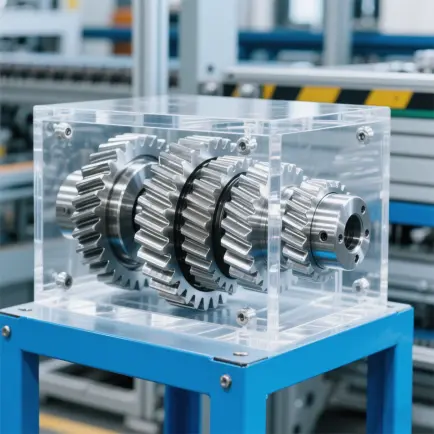
Knowledge
The Application, Material Selection and Inspection of Spline Shafts

Spline shaft is a type of mechanical transmission, mainly used for transmitting mechanical torque. There are longitudinal keyways on the outer surface of the shaft, and the rotating parts fitted on the shaft also have corresponding keyways, which can maintain synchronous rotation with the shaft. The application, material selection and inspection points of spline shaft are as follows:
The Application of Spline Shafts
Spline shafts are widely used in various mechanical equipment, especially in situations where large torque transmission and precise control are required. For instance, in the manufacturing of aircraft, automobiles, tractors, machine tools, agricultural machinery, and general mechanical transmission devices, spline shafts play a crucial role. Additionally, spline shafts are frequently employed in components such as gearshift gears in gearboxes that require longitudinal sliding.
Material selection for spline shafts
The material selection for spline shafts is mainly determined by their working environment and performance requirements. Commonly used materials include stainless steel, carbon steel, alloy steel, and aluminum alloy, etc.
1. Stainless steel: With its excellent corrosion resistance and high strength, it has become a commonly used material for spline shaft manufacturing.
2. Carbon steel: Due to its outstanding strength and ductility, it is the preferred material for spline shaft manufacturing. It is not only durable but also highly machinable, making it very suitable for manufacturing complex spline designs.
3. Alloy steel: By adding elements such as chromium and molybdenum, its performance is further enhanced and is often used in the manufacturing of spline shaft structures. This material has higher strength and wear resistance, capable of withstanding harsh working conditions.
4. Aluminum alloy: With its lightweight and high strength characteristics, it is very suitable for manufacturing spline shafts that require weight reduction. These alloys also have good corrosion resistance, ensuring durability in various environments.
The inspection of spline shafts is a crucial step to ensure their quality and performance. The inspection items mainly include geometric dimensions, mechanical properties, and surface characteristics, etc.
1. Geometric dimension inspection: Inspect the geometric parameters such as the outer diameter, inner diameter, tooth width, tooth height, tooth pitch, module, and pressure angle of the spline to ensure they meet the design requirements.
2. Coaxiality inspection: Inspect the coaxiality error between the spline shaft and the reference shaft to ensure its rotational accuracy.
3. Contact area inspection: Analyze whether the contact area of the spline teeth meets the design requirements to ensure the stability and reliability of torque transmission.
4. Surface roughness inspection: Inspect the roughness grades of the spline tooth surface and the shaft surface to evaluate their wear resistance and fatigue resistance.
5. Hardness inspection: Evaluate the hardness distribution of the spline material to ensure its wear resistance and strength.
6. Material composition analysis: Determine whether the material composition of the spline meets the standards through chemical composition analysis.
7. Fatigue test: Evaluate the fatigue life of the spline under cyclic loading to ensure its reliability in long-term use.
In summary, spline shafts have wide applications, diverse material choices, and comprehensive inspection items. In practical applications, appropriate materials should be selected and necessary inspections should be conducted based on specific working environments and performance requirements to ensure the quality and performance of spline shafts.
If you have any question, demand, new parts development or improve your supply chain for your spline shafts, please feel free to contact us info@castings-forging.com



